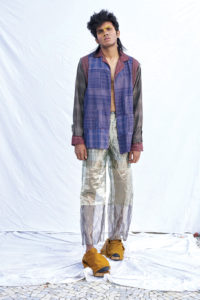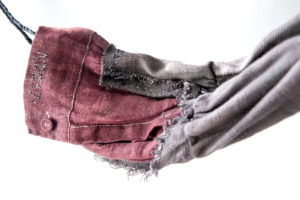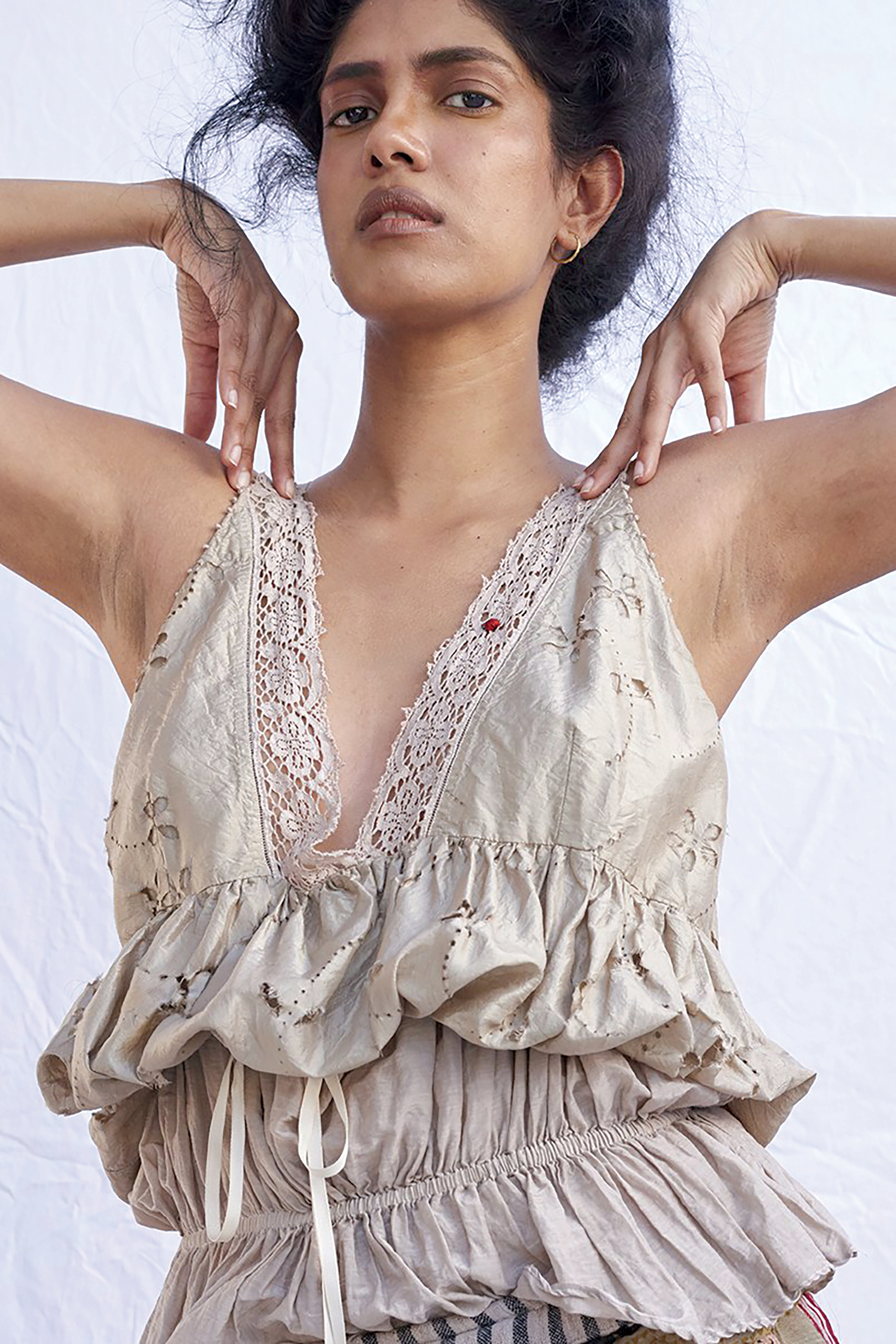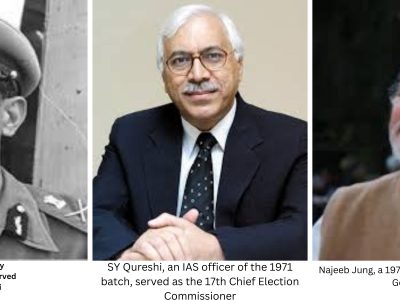Stylist Nikhil D did something completely new by combining leftovers and samples of different designers into one outfit
“16/30 – Instagram auction *48 hours* – Fawn: a Collection – unisex – one-of-a-kind – handmade – BID NOW!”, is how one the outfits, which went on auction, is captioned in Border and Fall’s Instagram page. Last week, this left the fashion industry perplexed, and experience something it had not before.
A collection made out of repurposed textiles and previous season’s samples is not everyone’s cup of tea but a seasoned stylist like Nikhil D seems to have come to terms with the idea he has been toying with for a while now.
Known for putting together finished looks for various style shoots where many designers lent Nikhil clothes, this is not the first time he has designed a collection using handwoven textile waste sourced from design studios, that is further organised and converted, carefully into garments.

This online-only, 48-hour sale featured unequalled 30 upcycled outfits made out of discard from designer labels like Eka, Akaaro, Bodice, Péro and Shift. Envisioned as an auction, the sale of these unique outfits came about as an interesting experiment to understand how willing Indian buyers are to pay for something that is re-evaluated and put together keeping the environment in mind.
This collaboration between Border & Fall – an online portal that is known for its Sari Series – and Nikhil D did manage to make noise on the social platform, given the reputed names involved in the project. A rare kind of partnership which only the well-versed with Indian fashion can perhaps appreciate.
Inspired by Nikhil’s conversations with the ecological gardener, Pradip Krishen, on minimising waste production in design, it was a subtle amalgamation of five very distinct voices from fashion which most of us only dream about.
Imagine a clothing style somewhere between designer labels Bodice and Péro. This is something many fashion enthusiasts would have asked from the labels – bringing together two different design sensibilities. We have in fact watched grand finales as a result of two designers collaborating, which is substantially nothing but two individual collections from two fashion studios labelled and marketed as one.
In that regard, what Nikhil has done is commendable to sort out tonnes of waste from not two but five designers and make some sense out of it. The collection is a gentle reminder of Nikhil’s school of thought. As someone who frequently shops from vintage shops and flea markets around the world, the collection does look and feel like something that he would curate.
According to details on Nikhil’s Instagram page, some 15 outfits have found new owners which is a good run for a project like this.
On being asked about the collection, Nikhil says, “Good design is about finding ways to use everything to its greatest potential.” Having previously created two upcycled collections with designer labels Eleven Eleven and Smallshop, Nikhil used that experience to bring this latest collection named as Fawn to the scale that it has gained.

Border and Fall’s intervention helped in putting together the entire auction. BF’s Sari Series is a set of 80 how-to-drape films that feature age-old sari tying techniques on yards of both, vintage and new-age saris, a project that was widely appreciated and has been featured on Google Arts and Culture.
Fawn as a collection gains merit for being upcycled, prestige for being made out of waste from a certain selection of fashion studios – and for the eccentricity coming from Nikhil D. However, using an ancient measure like auctioning to find prospective buyers for these, almost spiritual garments, does not seem to go well with the promotion of sustainability.
The idea that the best bidder gets the outfit puts down the scheme of creating something from nothing and encourage the affluence of the riches. Some outfits went for as high as Rs 13,000.
However, Nikhil has pledged five per cent of the sales from the auction to Animal Aid Unlimited in Udaipur, a noble decision to keep the integrity of the project. While we need more such assignments that bring back the discarded into use, it is equally important to introduce and exercise such practices with the best understanding of its need.
The thought of an Eka textile next to the one from Shift’s studio is an exquisite idea and could have found better reception if it was a travelling exhibition with self-help brochures on how one could do that with their Zara and H&M outfits at home.





